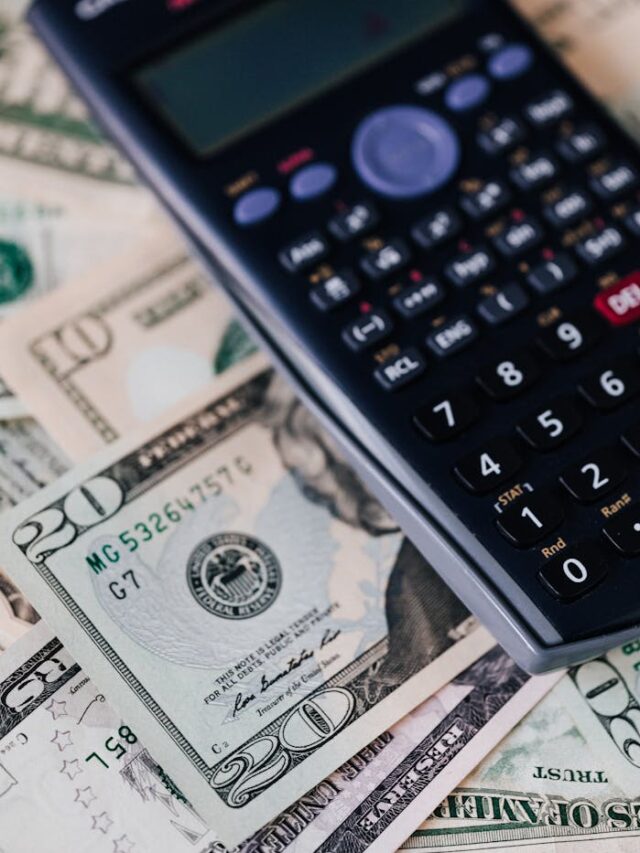Key Takeaway Box:
- GST Tax Refund Scam is a type of fraud that targets individuals by text message or email, claiming that the CRA is sending them a GST/HST tax refund or credit, and requesting personal information to proceed.
- The scammers may use fake websites, phone numbers, or documents to impersonate the CRA and trick the victims into providing their personal or financial information, or paying money to receive the refund or credit.
- To protect yourself from GST Tax Refund Scam, you should be aware of the signs of a scam, such as demanding immediate payment, requesting payment with cryptocurrency or gift cards, using threatening language, sending you a link to click on, or asking for personal or financial information.
- You should also verify the identity of the sender or caller, and never click on any links or attachments in suspicious messages. If you are unsure about the legitimacy of a communication from the CRA, you can contact the CRA directly using the official phone number or website.
- If you suspect you have been a victim of a scam or fraud, you should report it to the Canadian Anti-Fraud Centre, and take steps to protect your CRA account information and identity.
What is GST/HST Tax in Canada?
GST/HST Tax is a form of Value-Added Tax (VAT) that is applied to the price of goods and services sold in Canada. GST stands for Goods and Services Tax, and HST stands for Harmonized Sales Tax. GST is a federal tax that is charged at a rate of 5% across Canada. HST is a combination of GST and a provincial sales tax (PST) that is charged in five provinces: Ontario, New Brunswick, Nova Scotia, Prince Edward Island, and Newfoundland and Labrador. The HST rate varies by province, but it ranges from 13% in Ontario to 15% in Newfoundland and Labrador¹².
Under the GST/HST system, businesses collect the tax on behalf of the government from their customers and then remit it to the Canada Revenue Agency (CRA). The amount of GST/HST paid by a business on its inputs (e.g. materials, supplies, or services purchased) is subtracted from the amount of GST/HST it has collected on its outputs (e.g. sales) to determine the net amount owed to the government. This way, the tax is only applied to the value added by each business in the supply chain²³.
How a GST Scam is Performed?
A GST Scam is a type of fraud that targets individuals by text message or email, claiming that the CRA is sending them a GST/HST tax refund or credit, and requesting personal information to proceed. The scammers may use fake websites, phone numbers, or documents to impersonate the CRA and trick the victims into providing their personal or financial information, such as their social insurance number, bank account number, credit card number, or password. The scammers may also ask the victims to pay a fee or tax to receive the refund or credit, using methods such as cryptocurrency, prepaid cards, gift cards, or wire transfers. The scammers may use threatening or coercive language to pressure the victims into complying with their demands⁴⁵.
The CRA does not use text messages or instant messages to communicate with taxpayers about their taxes, benefits, or My Account. The CRA also does not ask taxpayers by email or text message to click a link and provide personal or bank information to receive a benefit payment. The CRA only sends email notifications to taxpayers who have registered for online mail service through My Account, and these notifications do not contain any personal or financial information or links. The CRA also does not request payment by cryptocurrency, prepaid cards, gift cards, or wire transfers⁴⁵.
Various Scamming Modes in GST Tax Refund
There are various modes that scammers may use to perform GST Tax Refund Scam, such as:
- Text message or email scam: The scammers send text messages or emails to the victims, claiming that the CRA is sending them a GST/HST tax refund or credit, and containing a link to a fake website or form. The scammers may use images or logos taken from the Government of Canada social media accounts or websites to make their messages look more legitimate. The scammers may also spoof the sender’s name or email address to appear as if they are from the CRA. The scammers ask the victims to click on the link and provide their personal or financial information, or pay a fee or tax to receive the refund or credit⁴⁵.
- Phone call scam: The scammers call the victims, pretending to be CRA agents or officers, and tell them that they are eligible for a GST/HST tax refund or credit. The scammers may use fake names, badge numbers, or phone numbers to impersonate the CRA. The scammers may also use call spoofing technology to make the caller ID display the CRA’s official phone number. The scammers ask the victims to verify their personal or financial information, or pay a fee or tax to receive the refund or credit, using methods such as cryptocurrency, prepaid cards, gift cards, or wire transfers. The scammers may use threatening or coercive language to pressure the victims into complying with their demands⁴⁵.
- Mail scam: The scammers send letters or documents to the victims, claiming that the CRA is sending them a GST/HST tax refund or credit, and containing a fake cheque or a form. The scammers may use the CRA’s logo or letterhead to make their mail look more authentic. The scammers ask the victims to deposit the cheque or fill out the form and return it to them, along with their personal or financial information, or a fee or tax to receive the refund or credit. The scammers may also ask the victims to call a fake phone number or visit a fake website to confirm their information or payment⁴⁵.
IMPORTANT LINKS:
- What Expenses Can You Deduct from Your Rental Income? (Updated 2024)
- How to Get Your EITC Refund Faster in 2024
- CPP, RRSP, TFSA, FHSA, AMT and OAS Changes: What You Need to Know for 2024
- What Happens to Your CPP and OAS Benefits When Your Spouse Dies?
- How to Get the Grocery Rebate Payments in Canada in January 2024
How to Be Safe From Tax Refund Scam in Canada?
To protect yourself from GST Tax Refund Scam, you should be aware of the signs of a scam, such as:
- Demanding immediate payment
- Requesting payment with cryptocurrency, prepaid cards, gift cards, or wire transfers
- Using threatening or coercive language
- Sending you a link to click on
- Asking for personal or financial information
You should also take the following steps to safeguard yourself from GST Tax Refund Scam:
- Verify the identity of the sender or caller. If you receive a text message, email, or phone call from someone claiming to be from the CRA, do not reply or provide any information. Instead, contact the CRA directly using the official phone number or website to confirm the legitimacy of the communication. You can also check the CRA’s scam alerts page to see the latest examples of fraudulent communications⁴⁵.
- Never click on any links or attachments in suspicious messages. If you receive a text message or email from someone claiming to be from the CRA, do not click on any links or attachments. They may lead you to a fake website or form, or infect your device with malware. Instead, delete the message or report it to the Canadian Anti-Fraud Centre⁴⁵.
- Protect your personal and financial information. Do not share your social insurance number, bank account number, credit card number, password, or any other sensitive information with anyone you do not know or trust. Do not give out your information over the phone, by text message, by email, or online, unless you are sure of the identity and authority of the person or organization. Do not write down your information or store it on your device. Use strong passwords and change them regularly. Monitor your online CRA accounts and bank statements for any suspicious activity⁴⁵.
- Report any scam or fraud attempts. If you suspect you have been a victim of a scam or fraud, or if you have received a suspicious communication from someone claiming to be from the CRA, you should report it to the Canadian Anti-Fraud Centre. You can also contact the CRA to inform them of the incident and to check the status of your account. You should also take steps to protect your CRA account information and identity, such as changing your passwords, setting up a personal identification number (PIN), and checking your credit report⁴⁵.
Conclusion
GST Tax Refund Scam is a serious threat to the security and privacy of Canadians. It involves scammers impersonating the CRA and trying to obtain personal or financial information, or money, from unsuspecting individuals by promising them a GST/HST tax refund or credit. To avoid falling victim to this scam, you should be vigilant and cautious when dealing with any communication from the CRA, and verify the identity and authenticity of the sender or caller. You should also protect your personal and financial information, and report any scam or fraud attempts to the authorities. By following these tips, you can safeguard yourself from GST Tax Refund Scam and enjoy your tax benefits without any hassle.
Source: (1) GST/HST calculator (and rates) – Canada.ca. https://www.canada.ca/en/revenue-agency/services/tax/businesses/topics/gst-hst-businesses/charge-collect-which-rate/calculator.html. (2) GST/HST for businesses – Canada.ca. https://www.canada.ca/en/revenue-agency/services/tax/businesses/topics/gst-hst-businesses.html.




